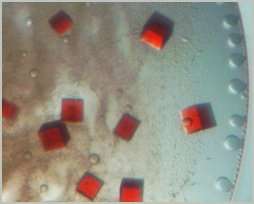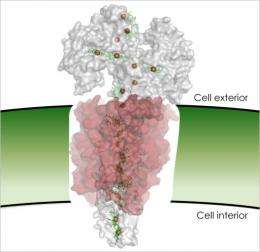Discovery opens the door to electricity from microbes

(PhysOrg.com) -- Using bacteria to generate energy is a signifiant step closer following a breakthrough discovery by scientists from the School of Biological Sciences at the University of East Anglia.
Published this week by the leading scientific journal Proceedings of the National Academy of Sciences (PNAS), the research demonstrates for the first time the exact molecular structure of the proteins which enable bacterial cells to transfer electrical charge.
The discovery means scientists can now start developing ways to ‘tether’ bacteria directly to electrodes - creating efficient microbial fuel cells or ‘bio-batteries’. The advance could also hasten the development of microbe-based agents that can clean up oil or uranium pollution, and fuel cells powered by human or animal waste.
“This is an exciting advance in our understanding of how some bacterial species move electrons from the inside to the outside of a cell,” said Dr. Tom Clarke.
“Identifying the precise molecular structure of the key proteins involved in this process is a crucial step towards tapping into microbes as a viable future source of electricity.”

Funded by the Biotechnology and Biological Sciences Research Council (BBSRC) and the US Department of Energy, the project is led by Dr. Clarke, Prof David Richardson and Prof Julea Butt of the School of Biological Sciences UEA, in collaboration with colleagues at the Pacific Northwest National Laboratory in the US.
In earlier research published by PNAS in 2009, the team demonstrated the mechanism by which bacteria survive in oxygen-free environments by constructing electrical wires that extend through the cell wall and make contact with a mineral – a process called iron respiration or ‘breathing rocks’. (See www.uea.ac.uk/bio/news/rocknews)
In this latest research, the scientists used a technique called x-ray crystallography to reveal the molecular structure of the proteins attached to the surface of a Shewanella oneidensis cell through which electrons are transferred.
More information: ‘Structure of a bacterial cell surface deca-heme electron conduit’ by T Clarke, et al. Proceedings of the National Academy of Sciences.
Provided by University of East Anglia


















